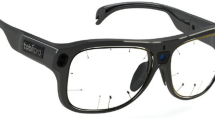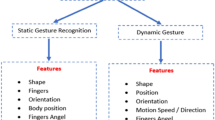Abstract
Computer-human interaction plays an important role in virtual reality. Glove-based input devices have many desirable features which make direct interactions between the user and the virtual world possible. However, due to the complexity of the human hand, recognising hand functions precisely and efficiently is not an easy task. Existing algorithms are either imprecise or computationally expensive, making them impractical to integrate with VR applications, which are usually very CPU intensive.
In the problem of posture and gesture recognition, both the sample patterns stored in the database and the ones to be recognised may be imprecise. This kind of imprecise knowledge can be best dealt with using fuzzy logic. A fast and simple posture recognition method using fuzzy logic is presented in this paper. Our model consists of three components: the posture database, the classifier and the identifier. The classifier roughly classifies the sample postures before they are put into the posture database. The identifier compares an input posture with the records in the identified class and finds the right match efficiently. Fuzzy logic is applied in both the classification and identification processes to cope with imprecise data. The main goal of this method is to recognise hand functions in an accurate and efficient manner. The accuracy, efficiency and the noise tolerance of the model have been examined through a number of experiments.
Similar content being viewed by others
References
Gomez JE et al. Why is 3-D interaction so hard and what can we really do about It? In: SIGGRAPH '94 Proceedings, SIGGRAPH, 1994;492–493
Watson R. A survey of gesture recognition techniques. Technical report TCD-CS-93-11. Department of Computer Science, Trinity College, Dublin, July 1993
Zimmerman TG, Lanier J. A hand gesture interface device. In: SIGCHI/GI, ACM 1987;189:192
Fels SS, Hinton G. GloveTalk: a neural interface between a data-glove and a speech synthesizer. IEEE Transaction on Neural Network 1993;4:2–8
Fels SS. Neural networks for computer-human interfaces: GloveTalk II. In: Progress in neural information processing. ICONIP Hong Kong: Springer 1996;2:1299–1304
Rubine D. The automatic recognition of gestures, PhD thesis, Carnegie Mellon University, 1991.
Lee J, Kunii TL. Model-based analysis of hand posture. IEEE Computer Graphics and Application 1995;77–86
Liang RH, Ouhyoung M. A sign language recognition system using hidden Markov model and context sensitive search. In: Symposium on virtual reality software and technology, ACM, 1996;59–66
Nam Y, Wohn K. Recognition of space-time handgestures using hidden Markov model. In: Symposium on Virtual Reality Software and Technology, ACM, 1996;51–58
Bezdek JC. Fuzzy models: what are they, and why? IEEE Transactions on Fuzzy Systems 1993;1:1–5
Malviya A,. Klette R. A fuzzy syntactic method for on-line handwriting recognition. In: Advances in structural and syntactical pattern recognition, SSPR 1996;381–392
Author information
Authors and Affiliations
Corresponding author
Rights and permissions
About this article
Cite this article
Tsang, E.K.H., Sun, H. An efficient posture recognition method using fuzzy logic. Virtual Reality 3, 112–119 (1998). https://doi.org/10.1007/BF01417672
Issue Date:
DOI: https://doi.org/10.1007/BF01417672




